Introduction
No matter how much you take care of your skin, some skin ailments are such that they are just inevitable, especially if you are regularly exposed to predisposing factors. A very good example of such skin conditions is fungal infection.
Fungal infections are widespread, with over 150 million severe cases of fungal infections occurring worldwide and 1.7 million death annually
1
. Fungal infections primarily occur when the skin comes in contact with a harmful fungus in the environment. Now, there are loads of harmful fungi in the environment. You probably don’t come down with fungal skin infections regularly because the immune system is strong enough to ward off these fungi.
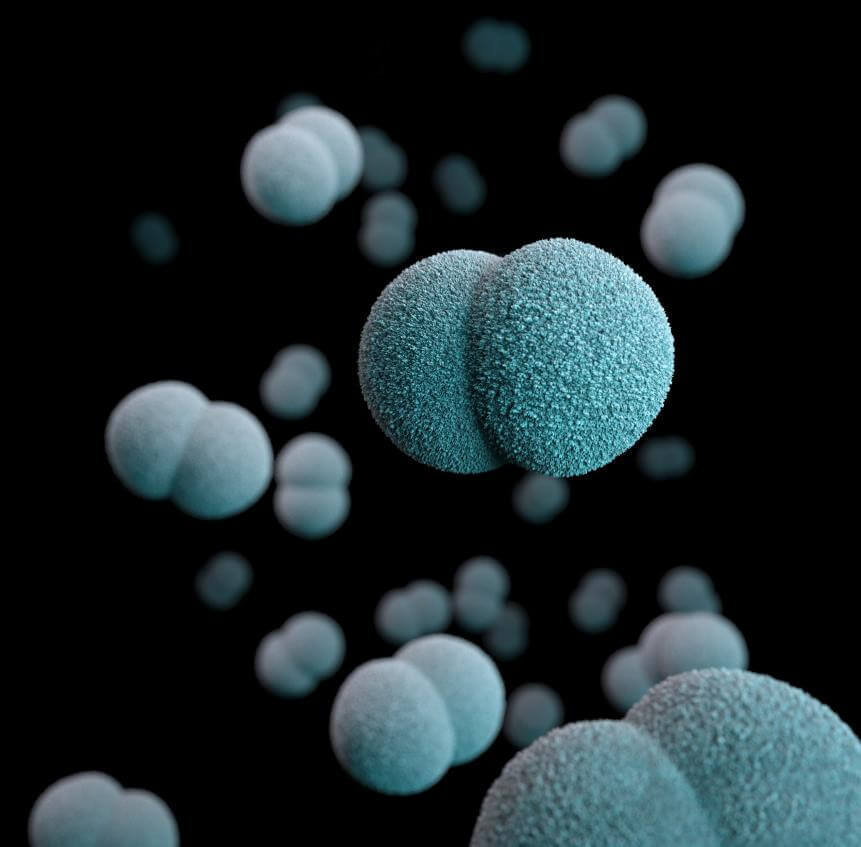
However, when the immune system is weakened or compromised by any factor, these fungi take invade the body system and cause different havoc to our skin. Factors like some medications(e.g., corticosteroids, some antibiotics such as Tetracyclines, quinolones, penicillins, etc.), cancer treatment, diabetes, and HIV
2
, amongst others, increase the chances of a fungal infection
3
. Primarily, those prone to recurrent fungal infections are those with weak immune systems.
Fungi can live in the air, soil, plants, and water. They also live in the human body; only half of the fungi types harm us. Fungi reproduce through spores that remain suspended in the air, landing on our skin or getting inhaled by us
4
. As a result, fungal infections often begin in the lungs and the skin.
Common fungal infections include; candidiasis, athlete’s foot, aspergillosis,
Tinea corporis
, jock itch, yeast infection, and ringworm, amongst many others
5
. Fungal infections can be very hard to treat and can take a while to disappear completely. Doctors usually prescribe oral medication or topical ointments or suppositories. However, specific home remedies can also help eliminate them.
Hence, we will consider some home remedies that work for fungal infections and how to apply them. However, for each remedy, take a few precautions, like testing each inside your hand to check for an adverse reaction. Expose the affected area to air and sunlight if possible. Avoid synthetic textiles and opt for cotton.
This is to avoid allergic reactions in sensitive skin. With that, below are 10 home remedies to help you get rid of fungal infections.
10 Home Remedies for Fungal Infections
1. Apple cider vinegar
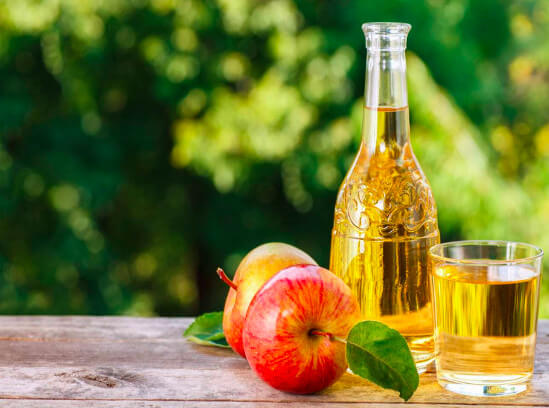
Apple cider vinegar (or ACV for short) is a very powerful natural remedy to get rid of fungal skin infections, and that’s for a good reason. It’s antibacterial and antifungal, so it’s ideal for combating a fungal overgrowth, whether it’s internally or externally. It also helps that these benefits are backed up by scientific studies
6
.
A recent study found that mildly diluted ACV could help prevent the growth of candida yeast. Since this type of yeast is responsible for many fungal infections, it makes ACV an excellent option for combating fungal infections
7
.
You can take apple cider vinegar in different ways; while some people prefer to swallow a small amount daily, some would dilute it with water and apply it to the affected area. Just make sure you choose a reliable, high-quality, organic brand, and be aware that if your symptoms don’t improve within a week, you should speak to your doctor.
2. Garlic
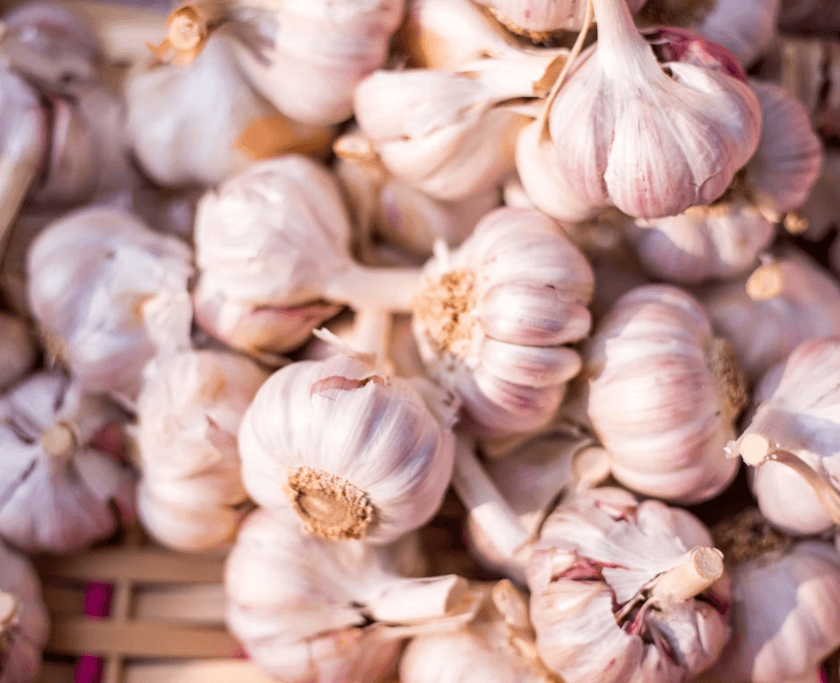
Garlic can be very smelly and even nauseating to some people, but it can be very effective in the fight against fungal infections! Garlic has known antifungal properties, which makes it a popular natural remedy for fungal skin infections
8
. Interestingly, garlic can also support your immune system
9
, so this is a bonus!
You can always use your diet to increase your garlic intake or take a supplement like Allicin Max. If you are determined to use this topically, try crushing and applying a few cloves to the affected area.
3. Oregano oil
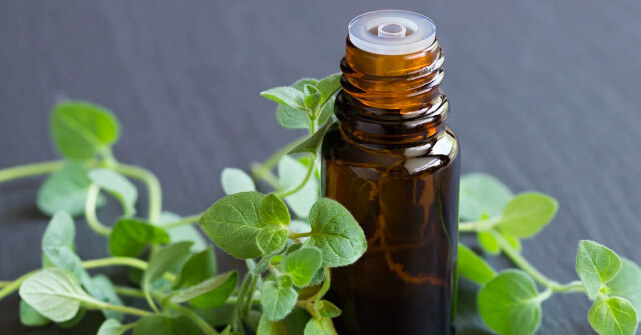
Oregano is a popular cooking ingredient in many dishes but has potent antifungal properties. Research has found that it can help to fight against certain strains of candida yeast, which is extremely useful considering how prevalent this type of yeast is in most fungal skin infections
10
.
However, since oregano oil is classified as an ‘essential oil’, you don’t want to go applying this directly to your skin. Instead, try to dilute this first with water, especially if you have a fungal toenail infection; for example, you could prepare a foot bath and add a few drops of the oil!
4. Tea tree oil
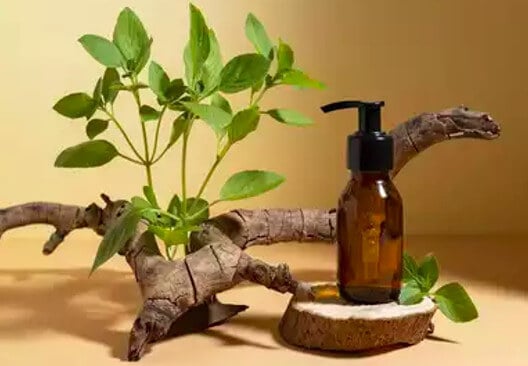
Naturally, tree oil is both antiseptic and antifungal
11
, so it’s hardly surprising that it’s popular in the cosmetic industry. While studies thus far have been inconclusive about its benefits for fungal skin infections, it’s been researched to be effective in microbial infections
12
.
When taking tea tree oil, try to mix a couple of drops with a carrier oil like coconut oil, as applying this directly to your skin is not advised and could cause extreme irritation. If the condition persists, visit your doctor.
5. Turmeric
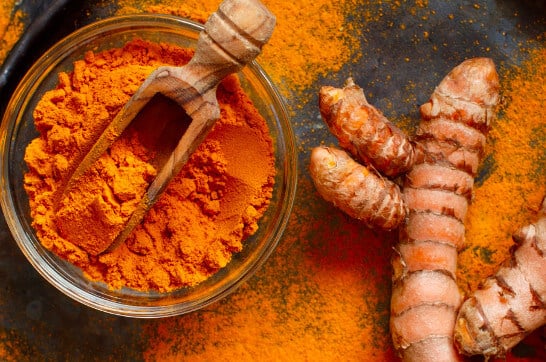
Is there nothing that turmeric can’t do? This vividly colored root has been used in Indian cuisine for centuries, but it’s only recently that people have caught on to the spice’s potent anti-inflammatory and antimicrobial properties
13
.
A study looking at the widespread potential of turmeric’s antiviral and antifungal qualities found that curcumin, an active turmeric compound, was effective against the Candida species but also against various fungi
14
.
If you try turmeric, like tea tree oil, make sure you mix it with a carrier oil like coconut oil first. Don’t be surprised if this paste initially gives your skin a yellow stain – this should reduce after washing.
6. Aloe vera
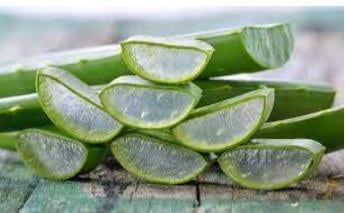
You will find aloe vera in different skincare creams and lotions because this plant is rich in antioxidants and antibacterial properties
15
. Studies have even found that it may boost your collagen production, so this is something worth bearing in mind when it comes to aging skin
16
.
So, if you have a fungal skin infection, it can help inhibit the growth of yeast spores as it contains compounds capable of combating the
Candida albicans
strain. This is especially useful when you combine this antifungal action with aloe vera’s benefits for the digestive system. This helps to prevent constipation and a build-up of waste products within the body that could negatively impact your gut environment.
7. Spilanthes
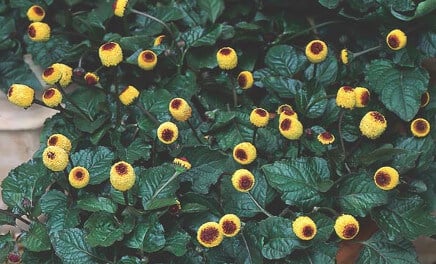
Spilanthes is a herb that’s traditionally used when it comes to oral problems and fungal skin infections. This is because studies have found that the herb possesses potent antimicrobial and antifungal properties, which can make it an effective treatment
17
.
8. Plain yogurt
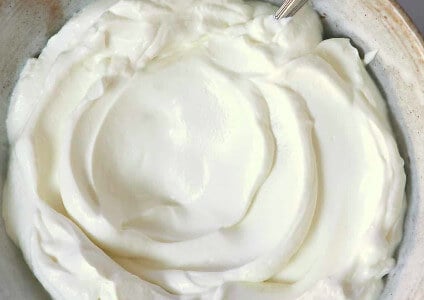
Plain yogurt is full of live bacteria cultures, particularly the
lactobacillus
strain. This friendly bacteria can help regulate the environment in your gut, preventing the small amount of candida yeast that lives there from overpopulating. It does this by releasing hydrogen peroxide, a compound that can kill candida yeast
18
. Interestingly, one study found that plain yogurt could be more effective than a popular antifungal cream
19
.
If you’re going to try this remedy, though, there are a few key things to bear in mind. Get plain yogurt, which is an unflavoured organic yogurt and completely free of sweeteners. If you apply anything other than this, you might end up doing more harm than good.
Ensure that once you’re finished with this remedy, you wash it off thoroughly – nobody wants old yogurt lingering for too long on their skin!
9. Coconut oil
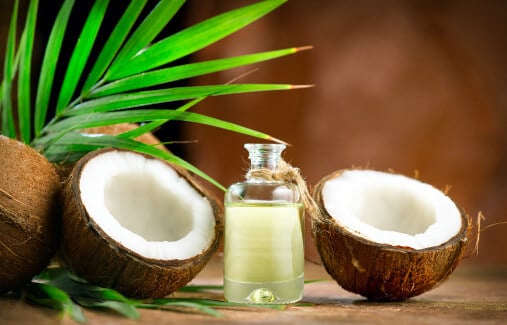
Coconut oil has been mentioned a few times in this article, so here we will shed a proper spotlight on it. It’s no longer news that coconut oil is an excellent source of healthy fatty acids and vitamin E
20
. That’s why the substance is so popular in the skincare industry already – it’s incredibly nourishing and soothing for dry, sensitive skin.
Regarding fungal skin infections, coconut oil is naturally antifungal, and studies thus far have produced positive results. One trial conducted in 2015 found that mice fed coconut oil experienced a 10-dolf drop in the fungus
C. albicans
, and the substance produced very few adverse side effects. Although more human-based trials are needed, things are going the right way so far
21
.
As with other products mentioned earlier, quality really matters here. You want to opt for extra virgin, 100% pure, organic coconut oil to get the best results possible. You can use this topically when coconut oil is in its liquid stage (try warming gently and applying once it has cooled down) and apply gently to the affected area.
10. Cranberry juice
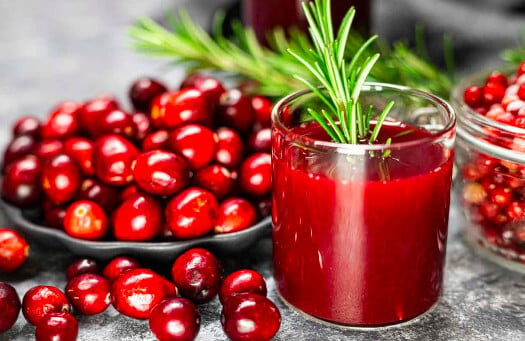
Finally, on our shortlist of home remedies for fungal infections, is the amazing cranberry juice. Cranberry juice supports your bladder health due to its antibacterial properties
22
. However, studies have found that cranberry juice could possess some antifungal benefits, too
23
.
It’s thought that cranberry juice may inhibit yeast production. In a study, cranberry juice was found to exert a significant antifungal influence on eight different dermatophytes (fungus) species, although it did not impact the
Candida albicans
strain
24
.
Interesting! If you want to try cranberry juice, please be aware that it is often full of added sugars. It might be best to opt for an organic brand that is completely free from refined sugars and is actually fermented, meaning that it contains plenty of gut-friendly L+ lactic acid. This would be a purely internal remedy, so please do not attempt to apply it to your skin.
There you have it; 10 home remedies to help you get rid of fungal infections. While some of these products can be gotten readily at home, you have to get to the stores to get some. As such, you make proper findings on the best quality to buy.
Conclusion
Fungal skin infections are very common, and although they may be difficult to treat, they are definitely curable. And often times, the solution lies mostly within the walls of your home unless it looks severe or if there are pain and a lot of discomfort involved, in which case you should see a specialist.
In this article, we have discussed ten of those remedies, and if followed carefully, you will get maximum benefits. Moreso, make sure to stay hygienic and do your part to avoid anything that could predispose you to fungal infections.
However, ensure you pay close attention to your skin while using any of these remedies. Should any allergic reactions occur, discontinue immediately. More importantly, if there is no improvement after a few days, preferably 3-4 days, visit your doctor immediately.
References
-
Kainz, K., Bauer, M. A., Madeo, F., & Carmona-Gutierrez, D. (2020). Fungal infections in humans: The silent crisis. Microbial Cell, 7(6), 143-145.
https://doi.org/10.15698/mic2020.06.718
-
Lao, M., Li, C., Li, J., Chen, D., Ding, M., & Gong, Y. (2020). Opportunistic invasive fungal disease in patients with type 2 diabetes mellitus from Southern China: Clinical features and associated factors. Journal of Diabetes Investigation, 11(3), 731-744.
https://doi.org/10.1111/jdi.13183
-
Oladele, R., Ogunsola, F., Akanmu, A., Stocking, K., Denning, D. W., & Govender, N. (2020). Opportunistic fungal infections in persons living with advanced HIV disease in Lagos, Nigeria; a 12-year retrospective study. African Health Sciences, 20(4), 1573-1581.
https://doi.org/10.4314/ahs.v20i4.9
-
Institute of Medicine (US) Committee on Damp Indoor Spaces and Health. Damp Indoor Spaces and Health. Washington (DC): National Academies Press (US); 2004. 4, Toxic Effects of Fungi and Bacteria. Available from:
https://www.ncbi.nlm.nih.gov/books/NBK215642/
-
Kumar Reddy, G. K., Padmavathi, A. R., & Nancharaiah, Y. V. (2022). Fungal infections: Pathogenesis, antifungals and alternate treatment approaches. Current Research in Microbial Sciences, 3.
https://doi.org/10.1016/j.crmicr.2022.100137
-
Ousaaid, D., Laaroussi, H., Bakour, M., Ennaji, H., Lyoussi, B., & Arabi, I. E. (2021). Antifungal and Antibacterial Activities of Apple Vinegar of Different Cultivars. International Journal of Microbiology, 2021.
https://doi.org/10.1155/2021/6087671
-
Yagnik, D., Serafin, V., & Shah, A. J. (2018). Antimicrobial activity of apple cider vinegar against Escherichia coli, Staphylococcus aureus and Candida albicans; downregulating cytokine and microbial protein expression. Scientific Reports, 8.
https://doi.org/10.1038/s41598-017-18618-x
-
Khounganian, R. M., Alwakeel, A., Albadah, A., Nakshabandi, A., Alharbi, S., & Almslam, A. S. (2023). The Antifungal Efficacy of Pure Garlic, Onion, and Lemon Extracts Against Candida albicans. Cureus, 15(5).
https://doi.org/10.7759/cureus.38637
- Arreola, R., Quintero-Fabián, S., López-Roa, R. I., Flores-Gutiérrez, E. O., Reyes-Grajeda, J. P., Carrera-Quintanar, L., & Ortuño-Sahagún, D. (2015). Immunomodulation and Anti-Inflammatory Effects of Garlic Compounds. Journal of Immunology Research, 2015. https://doi.org/10.1155/2015/401630
-
Cleff, M. B., Meinerz, A. R., Xavier, M., Schuch, L. F., Schuch, L. F., Araújo Meireles, M. C., & Alves Rodrigues, M. R. (2010). In vitro activity of origanum vulgare essential oil against candida species. Brazilian Journal of Microbiology, 41(1), 116-123.
https://doi.org/10.1590/S1517-838220100001000018
-
Wróblewska, M., Szymańska, E., & Winnicka, K. (2021). The Influence of Tea Tree Oil on Antifungal Activity and Pharmaceutical Characteristics of Pluronic® F-127 Gel Formulations with Ketoconazole. International Journal of Molecular Sciences, 22(21).
https://doi.org/10.3390/ijms222111326
-
Carson, C. F., Hammer, K. A., & Riley, T. V. (2006). Melaleuca alternifolia (Tea Tree) Oil: A Review of Antimicrobial and Other Medicinal Properties. Clinical Microbiology Reviews, 19(1), 50-62.
https://doi.org/10.1128/CMR.19.1.50-62.2006
-
Prasad S, Aggarwal BB. Turmeric, the Golden Spice: From Traditional Medicine to Modern Medicine. In: Benzie IFF, Wachtel-Galor S, editors. Herbal Medicine: Biomolecular and Clinical Aspects. 2nd edition. Boca Raton (FL): CRC Press/Taylor & Francis; 2011. Chapter 13. Available from:
https://www.ncbi.nlm.nih.gov/books/NBK92752/
-
Adamczak, A., Ożarowski, M., & Karpiński, T. M. (2020). Curcumin, a Natural Antimicrobial Agent with Strain-Specific Activity. Pharmaceuticals, 13(7).
https://doi.org/10.3390/ph13070153
-
Surjushe, A., Vasani, R., & Saple, D. G. (2008). ALOE VERA: A SHORT REVIEW. Indian Journal of Dermatology, 53(4), 163-166.
https://doi.org/10.4103/0019-5154.44785
-
Cho, S., Lee, S., Lee, J., Lee, D. H., Won, H., Kim, S. M., & Chung, J. H. (2009). Dietary Aloe Vera Supplementation Improves Facial Wrinkles and Elasticity and It Increases the Type I Procollagen Gene Expression in Human Skin in vivo. Annals of Dermatology, 21(1), 6-11.
https://doi.org/10.5021/ad.2009.21.1.6
-
Prachayasittikul, V., Prachayasittikul, S., Ruchirawat, S., & Prachayasittikul, V. (2013). High therapeutic potential of Spilanthes acmella: A review. EXCLI Journal, 12, 291-312.
https://www.ncbi.nlm.nih.gov/pmc/articles/PMC4827075/
-
Soni, R., Jain, N. K., Shah, V., Soni, J., Suthar, D., & Gohel, P. (2020). Development of probiotic yogurt: Effect of strain combination on nutritional, rheological, organoleptic and probiotic properties. Journal of Food Science and Technology, 57(6), 2038-2050.
https://doi.org/10.1007/s13197-020-04238-3
-
Darvishi, M., Jahdi, F., Hamzegardeshi, Z., Goodarzi, S., & Vahedi, M. (2015). The Comparison of Vaginal Cream of Mixing Yogurt, Honey and Clotrimazole on Symptoms of Vaginal Candidiasis. Global Journal of Health Science, 7(6), 108-116.
https://doi.org/10.5539/gjhs.v7n6p108
-
Boateng, L., Ansong, R., Owusu, W. B., & Steiner-Asiedu, M. (2016). Coconut oil and palm oil’s role in nutrition, health and national development: A review. Ghana Medical Journal, 50(3), 189-196.
https://www.ncbi.nlm.nih.gov/pmc/articles/PMC5044790/
-
Gunsalus, K. T. W., Tornberg-Belanger, S. N., Matthan, N. R., Lichtenstein, A. H., & Kumamoto, C. A. (2015). Manipulation of host diet to reduce gastrointestinal colonization by the opportunistic pathogen Candida albicans. mSphere, 1(1), e00020-15.
https://doi.org/10.1128/msphere.00020-15
- Williams G, Hahn D, Stephens JH, Craig JC, Hodson EM. Cranberries for preventing urinary tract infections. Cochrane Database Syst Rev. 2023 Apr 17;4(4): CD001321. doi: 10.1002/14651858.CD001321.pub6. PMID: 37068952; PMCID: PMC10108827.
-
Swartz, J. H., & Medrek, T. F. (1968). Antifungal Properties of Cranberry Juice. Applied Microbiology, 16(10), 1524-1527.
https://doi.org/10.1128/am.16.10.1524-1527.1968
-
Swartz, J. H., & Medrek, T. F. (1968). Antifungal Properties of Cranberry Juice. Applied Microbiology, 16(10), 1524-1527.
https://doi.org/10.1128/am.16.10.1524-1527.1968

 By myulikeadmin
By myulikeadmin



